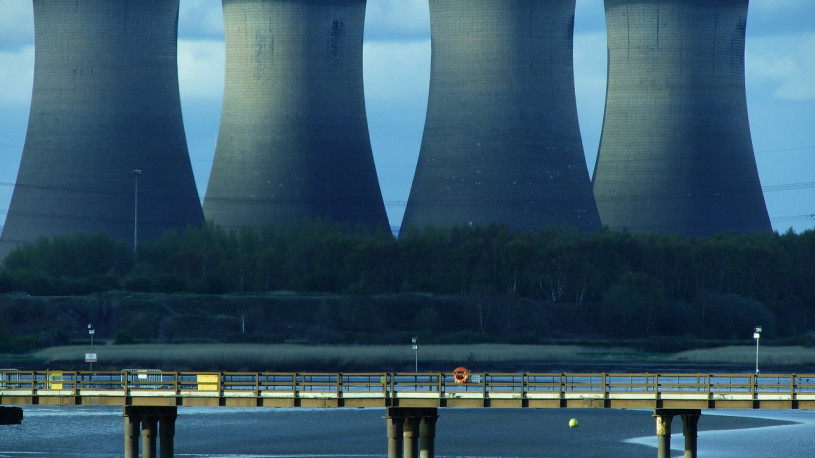-
The EU’s “Winter Package” Energy Policy and the Biofuel and the Chemicals Industry
 Continue Reading
Continue ReadingWith low-energy fanfare, the European Commission has released its ‘winter package’, a document that outlines its energy policy for the coming years. The proposed legislation is a bold and far-reaching swathe of laws that will form the bedrock of the EU’s efforts to meet Paris COP21 climate change targets.
However, many have been left disappointed by the move, complaining that the plans were released before consulting industry heads, that the focus on switching to renewable energy sources doesn’t go far enough, or that in trying write an energy policy for all of Europe’s diverse economies and industries, the legislation pleases no one.
Certainly the proposals are grand. As the Guardian reports, “In total, eight pieces of legislation were proposed today [30/11/2016], covering a dizzying array of issues from electricity market design to energy poverty, and from biofuels to security of supply.” So it is no wonder if some of the laws miss their targets, or if some noses are put out of joint.
The Guardian continues by noting how a number of environmental groups that see the winter package as a missed opportunity. Reporting how, “Jonathan Gaventa of E3G called the legislation ‘politically cautious’ while ClientEarth lawyer Maria Kleis-Walravens dubbed it ‘disappointing in the extreme’. [Whereas] Sini Eräjää, a spokeswoman for BirdLife Europe, said: ‘Ignoring science and brushing aside evidence of the destructive impacts of current use will not make these problems go away. It will more likely make them worse.’”
Cefic, The European Chemical Industry Council, however, has been generally positive about the proposals. Stating that, “This package represents a business opportunity for chemical companies. The Energy Performance of Buildings Directive, Energy Efficiency and Renewable Energy Directive will generate business opportunities for the European chemical industry. We manufacture products for energy savings, solar cells and windmills, insulation and lighter cars. The construction industry is the chemical industry’s second biggest customer, amounting to 8% of total chemical demand. Cefic stresses the importance of the circular economy of CO2 through the integration of carbon capture and utilisation (CCU) as an option for the future.”
Although the agency is critical of what it sees as some policy flip-flopping, stating that, “While many elements of the package are well designed, others are not – jumping from supporting renewables to supporting capacity payments being one case.”
It has also been noted by others that, “The [EU] bloc has pledged to phase out subsidies for food-based energy crops, but the revised renewable energy directive released only whittles down a cap on such biofuels from 7% in 2020 to 3.8% in 2030.” Bringing into question exactly what direction Brussels is heading on the matter.
Others argue that synthetic fossil fuels should be removed from the EU’s way of thinking. For example, Bellona [an independent, environmental NGO] simply states that, “Synthetic fossil fuels are not renewable, nor sustainable, economically or in any other way. Capturing CO2 from industrial facilities and preventing it from entering the atmosphere is, indeed, a major step in decarbonising industry. However, using that CO2 to make synthetic fossil fuels, after which the CO2 is deposited in the atmosphere during fuel combustion, is costly, energy-demanding, and does not make sense from a climate perspective.” Leading them to “urge” that, “synthetic fuels, produced with waste-stream industrial CO2, be left out of the Renewable Energy Directive.”
Perhaps the diplomats are overreacting. After all, while Bellona is right to state that, “this [winter] package forms the Commission’s official position vis-à-vis the Union’s climate and energy policy towards 2030.” It also notes that the policies are not yet legally binding and are, “still pending negotiation and approval by the European Parliament and Member States.”
So once the horse trading and special interests of national governments begin to apply further influence, it is quite possible that the ‘winter package’ will be an entirely different beast. Although the chemical industry, with its long-term investment requirements, will prefer a quicker resolution of how the continent plans to combat climate change.
It is already reeling under the expense of increasing levels of bureaucracy. The introduction of REACH, amongst other layers of red-tape, is proving costly. As ICIS highlighted in June 2016, “EU chemical regulation costs firms across the 28-country bloc €9.5bn/year, according to the long-awaited cumulative cost assessment [recently] published by the European Commission.” Adding that this, “represented around 2% of turnover and 12% of the value added.”
When combined with fluctuating oil prices, an unstable logistics market, US shale gas development, political uncertainty at home, and economic uncertainty in China, analysts are not surprised that the chemical industry is stagnating.
While the EU’s introduction of a ‘winter package’ will NOT be the end of the European chemical industry, its timing is unfortunate. Or maybe even irrelevant, for after all, when the bureaucrats have set the targets, and the caps and subsidies have been named, it is primarily consumer demand that will fire recovery.
As Cefic’s Director General, Marco Mensink, said upon reading the ‘winter package’ and what it had in store for the chemicals industry; “It is markets, not targets that will drive change.” Something which chemical traders, plastics manufacturers, agrichemical product developers, and anyone else who works in the chemicals industry would do well to remember.
-
A Cheaper Chemical Process for Silicon-Carbon Compounds
 Continue Reading
Continue ReadingSilicon-carbon compounds are useful in the modern world. In fact, you are probably much closer to one than you think, as they can be found in TV and computer screens, are used in coating and paint manufacturing, as well as semi-conductors, and agricultural chemical products . Which is surprising, considering that nature does not naturally bond silicon and carbon together, it must be synthetically manufactured.
Or at least until now, for scientists at the California Institute of Technology in Pasadena have discovered a way to make organic silicon-carbon compounds that they claim are more environmentally friendly to produce, and have the potential to be a lot cheaper.
Jennifer Kan, a postdoctoral scholar in Arnold’s lab and lead author of the new study, explained, “Even though silicon is so abundant, all around us, in rocks and all over the beach, no living organism is known to put silicon-carbon bonds together.”
“So, we decided to get nature to do what only chemists could do — only better,” adds Frances Arnold, Caltech’s Dick and Barbara Dickinson Professor of Chemical Engineering, Bioengineering and Biochemistry, and principal investigator of the new research.
They did this by finding a suitable bacterium which they could modify into doing what nature has apparently not thought of doing.
The scientific journal Nature described the discovery as follows; “By scouring protein databases, Arnold and her colleagues found a few dozen promising enzymes. After some screening, they settled on one from an extremophile bacterium that lives in Icelandic underwater hot springs, called Rhodothermus marinus. They synthesized the gene for this protein and inserted it into E. coli bacteria.”
To their delight, they found that the enzyme could catalyse silicon-carbon bonding, if “fed the right silicon-containing precursors”. This happened even though in nature the enzyme would not normally do this, as bacteria don’t naturally produce silicon-containing compounds.
However, the newly formed enzyme was not very efficient at making the compounds, so, “the team introduced mutations into the active region of the enzyme and selected the bacteria that showed an improvement.” They then studied each new generation of the bacterium to fine tune the process, noting that each generation had improved silicon-carbon compound producing efficiency.
“It’s like breeding a racehorse,” says Arnold, “A good breeder recognizes the inherent ability of a horse to become a racer and has to bring that out in successive generations. We just do it with proteins.”
And, as the scientific journal ScienceDaily reports, “After only three rounds, they had created an enzyme that can selectively make silicon-carbon bonds 15 times more efficiently than the best catalyst invented by chemists. Furthermore, the enzyme is highly selective, which means that it makes fewer unwanted byproducts that have to be chemically separated out.”
The researchers have published their results in the journal Science, where they claim that, “This iron-based, genetically encoded catalyst is nontoxic, cheaper, and easier to modify compared to other catalysts used in chemical synthesis.” Better still, says Jennifer Kan, also part of the team at CalTech, “The new reaction can also be done at room temperature and in water.”
Whilst it is too early for coating manufacturers, and the agrichemical industry to apply this technology in chemical production, the possibility of a greener, cheaper and more efficient way of producing silicon-carbon compounds could have major repercussions in the future. In fact, maybe the chemical industry as a whole should start to think about what synthetically produced compounds could be made better or cheaper if the process was organic.
Is it time for the chemical industry to think less synthetic and more organic?
Photo credit: dogtrends.com
-
Agribusiness Big Data; To Share or To Secure
 Continue Reading
Continue ReadingOne of the biggest buzzwords of the modern business world is ‘big data’, and nowhere is this more evident than in the agricultural industry. The need for those who supply, manufacture and trade in agrichemical products to gather information on how and where their products work, and who and where their customers are has never been greater.
But with ‘big data’ comes a battle of rights and interests over how it should be used. For while industry chiefs make the case that the information gained from millions of dollars of worth of investment should not be handed out freely, lobbyists argue that agribusiness data is information on the food that we all eat, and should be shared freely.
Take for example, the European Food Safety Authority’s recent decision to “release the raw data used in the recent EU safety evaluation of glyphosate”. By doing so, the agency hopes that, “When combined with the detailed background documents already published on EFSA’s website, the information will be sufficient to enable a third-party scientist to scrutinise the evaluation of glyphosate that was carried out by EFSA and EU Member States.”
By releasing the research findings from industry studies, the EFSA claims it, “…will further increase the transparency of the glyphosate evaluation – while complying with its obligations under European law regarding the protection of commercially sensitive information.”
Monsanto meanwhile, decided not to issue a press release on the matter. Presumably they hope not to fan the flames on such a hot topic, but it is still possible to imagine their fear of how environmentalists will use the data. To quote Monsanto’s reaction to a New York Times report on GMO’s, “It’s easy for anyone to cherry-pick numbers to make a misleading argument.”
But even the release of the research data leaves no one happy. Agricultural chemical companies are concerned about the use of their data, which they paid for, being used against them, while environmentalists remained concerned that the research was conducted by Agrichem production companies.
How agribusiness handles ‘big data’ is a fine line, and while government bodies like the EFSA decide what they think is best. To share or to secure remains a key question, but who should answer it?
Photo credit: Edwin Kee
